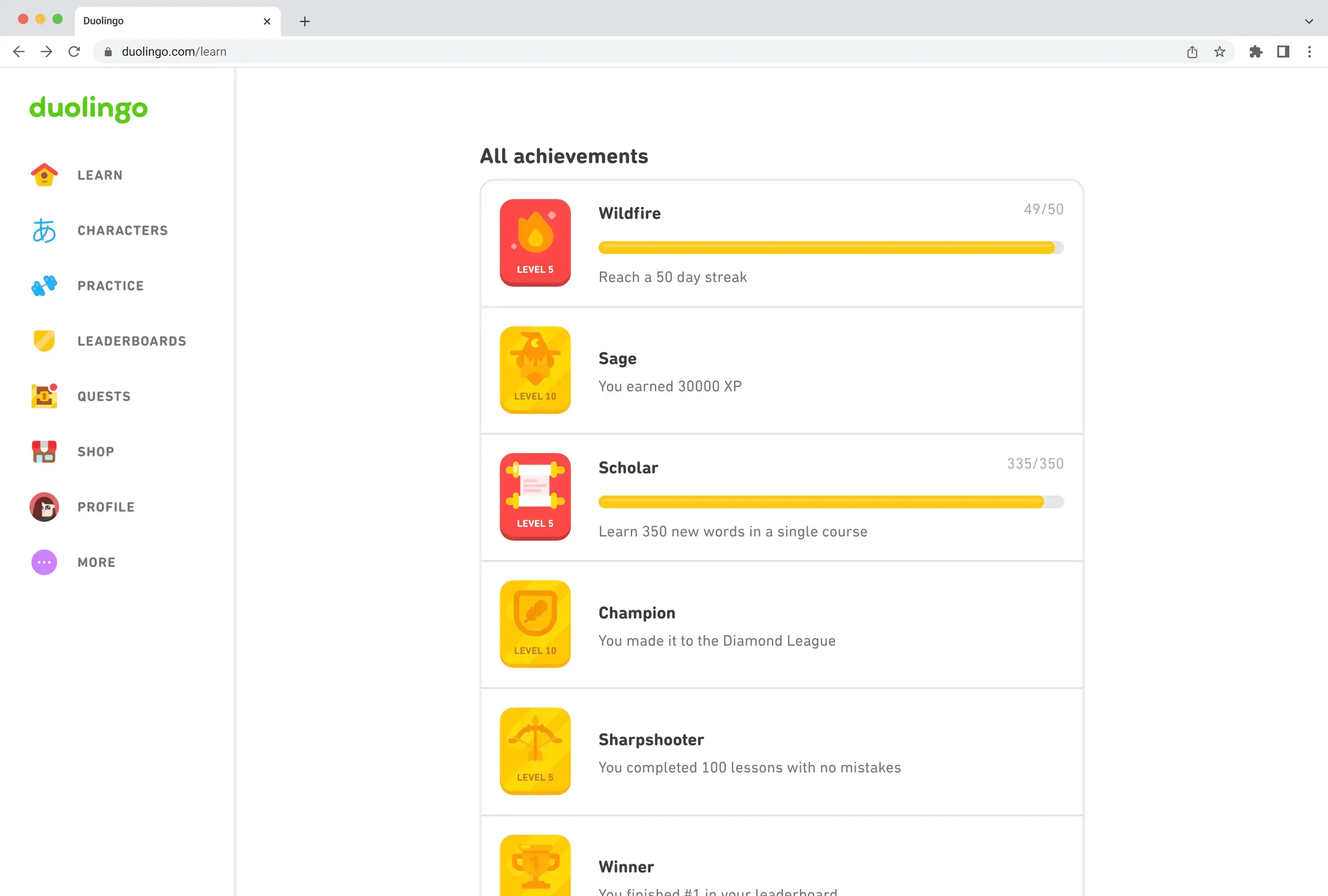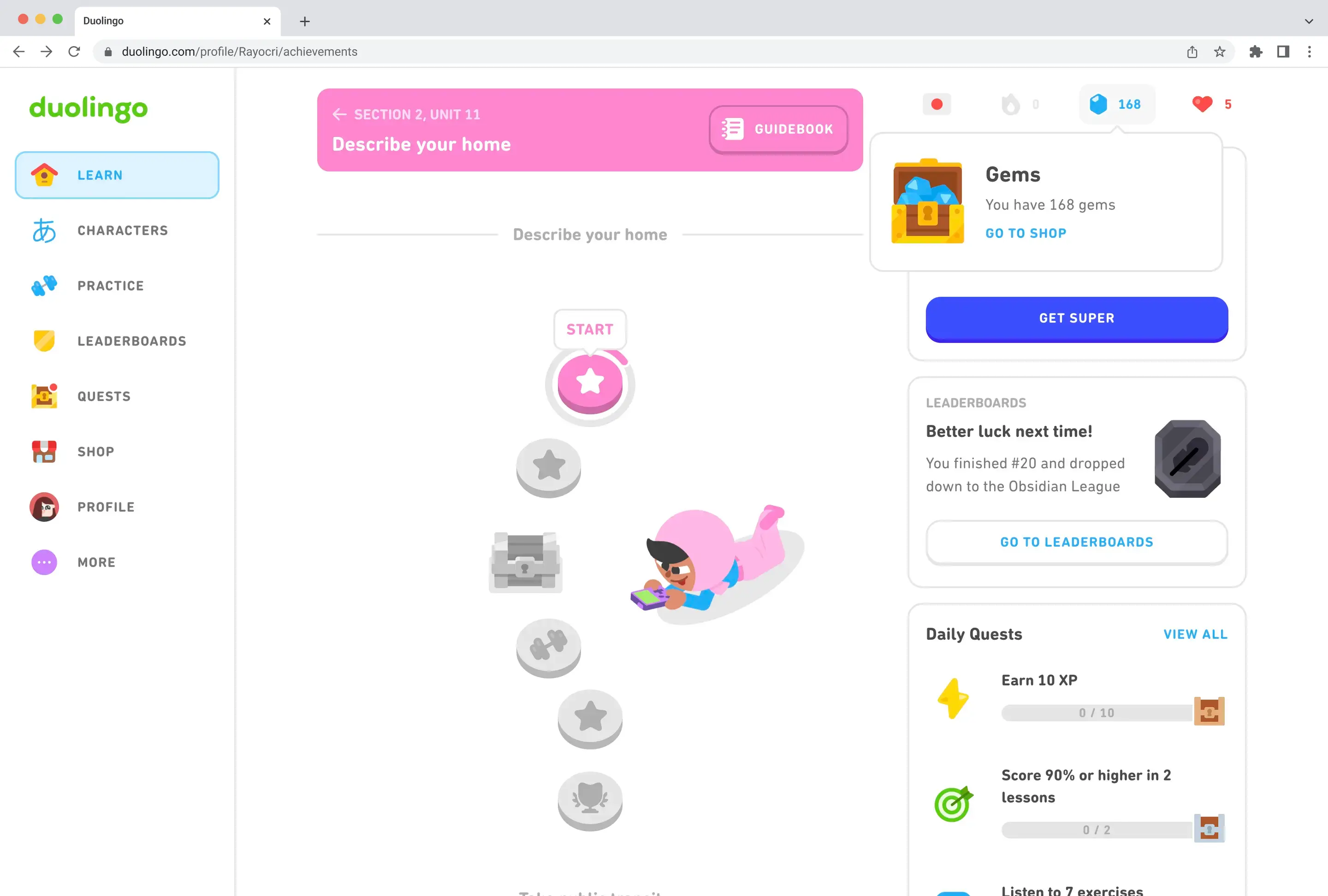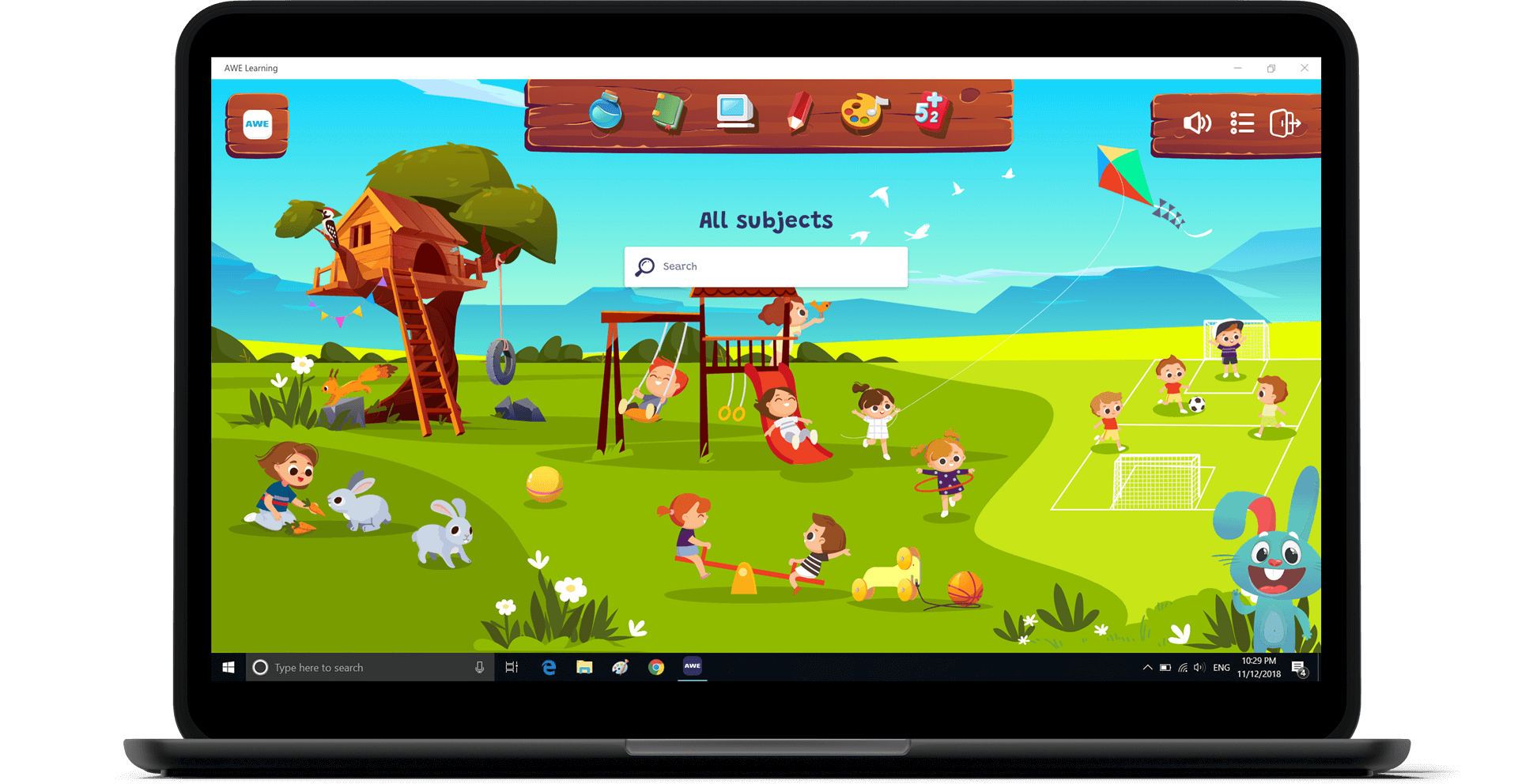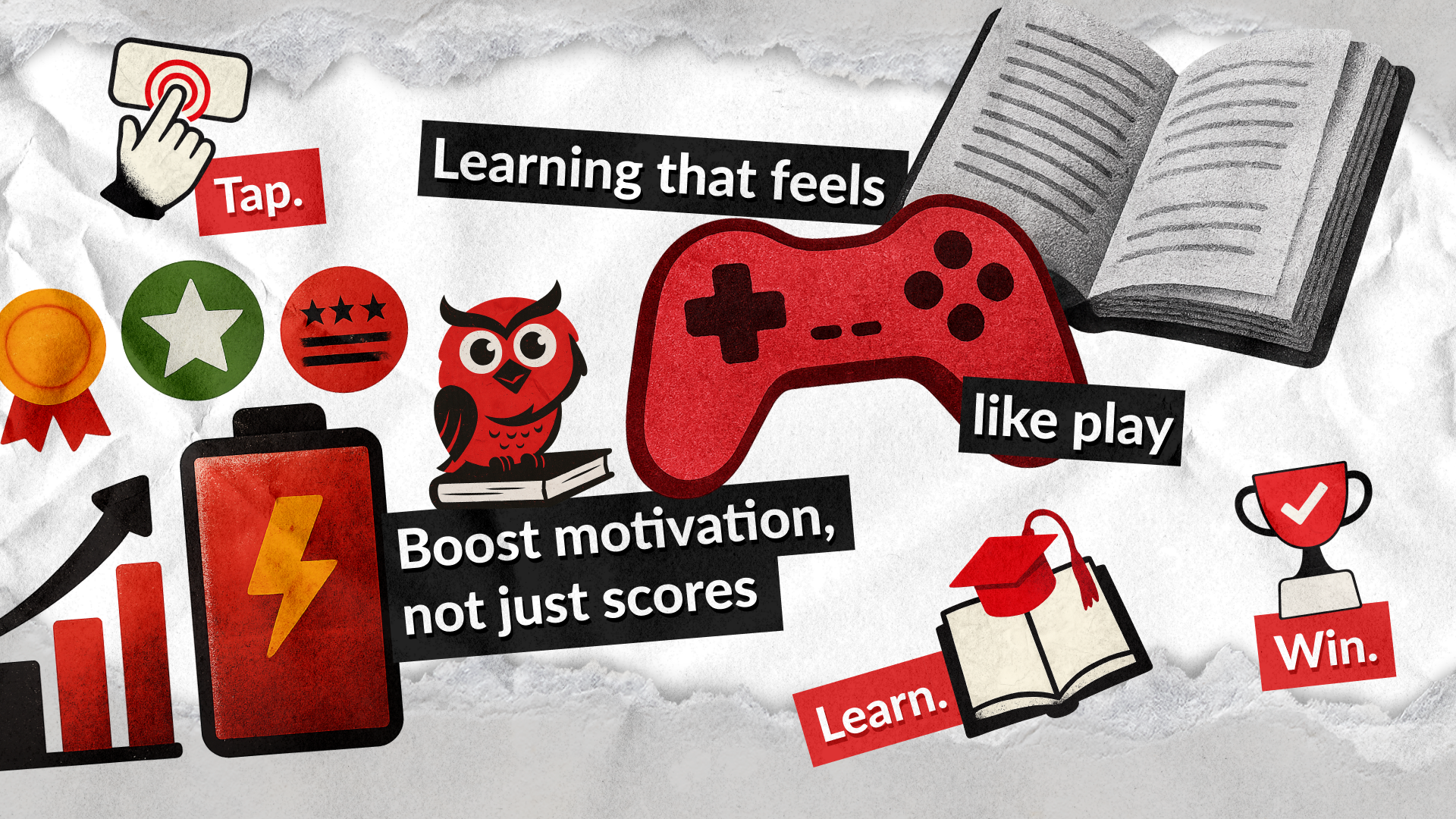Online learning has become a cornerstone of education, but a big challenge still remains: capturing and holding learners’ attention in a virtual environment. Traditional e-learning methods tend to feel like a slog, leaving learners unmotivated and struggling to participate actively. In today’s world, simply putting content online isn’t enough to drive meaningful learning outcomes, especially if it’s an e-learning solution for kids.
Gamification is a powerful approach to transforming users’ thoughts and interactions with online education. This article will show how strategically weaving game-like elements into your e-learning platform can unlock a new level of engagement and learning effectiveness.
What is E-Learning Gamification?
At its core, e-learning gamification is the strategic application of game design elements and game principles in non-game contexts—specifically, within a virtual learning environment. Think of this concept as thoughtfully integrating games’ engaging aspects into your online courses.
Essentially, gamification in e-learning utilizes features typically found in games, like compelling narratives, structured levels of progression, tangible achievements, point systems, digital badges, and competitive leaderboards, to support the learning process.
It’s about more than just adding fun; a well-designed gamified learning platform aims to make the learning experience more interactive, motivating, and enjoyable. This approach transforms passive content consumption into an active and rewarding journey.
Why Gamification Works
The buzz around e-learning gamification isn’t just hype; it’s supported by solid evidence showing its effectiveness in addressing key challenges in online learning. It’s no wonder the gamification e-learning industry is projected to reach a staggering $62 billion by 2030. By strategically incorporating game-like elements, you can unlock a wealth of benefits for your learners. Let’s break down how integrating game mechanics can transform the learning experience.
Igniting the Drive to Learn
Problem: Learners often struggle with a lack of motivation while using traditional online courses, which leads to disengagement and incomplete modules.
Promise: Gamification in e-learning offers a powerful solution that will significantly boost learners’ intrinsic and extrinsic motivation.
Proof: A 2020 study revealed that e-learning gamification helped students feel considerably more motivated than traditional learning methods. The increase in motivation stems from the fact that gamification for learning can empower learners, giving them a greater sense of ownership over their progress, thereby improving their self-efficacy and drive. Deloitte, for instance, experienced a remarkable 50% increase in training engagement and completion rates after gamifying their leadership training.
Encouraging Active Involvement
Problem: Low participation rates, particularly in interactive elements like discussions, can hinder the learning process in standard online learning environments.
Promise: Implementing gamification is a way to increase learner participation and foster a more active learning community.
Proof: Research from a 2017 study demonstrated that gamifying e-learning made the learning material more captivating, which significantly boosted students’ behavioral, emotional, and cognitive engagement. The study also highlighted that students responded much more positively to online discussions that incorporated game elements such as badges, thumbs-ups, avatars, and progress bars.

Making Knowledge Stick
Problem: A key concern with any learning method is whether learners retain the information long-term. Traditional online courses sometimes fall short in this area.
Promise: Gamified e-learning is about more than just engagement; it also leads to better learning outcomes and improved knowledge retention.
Proof: A 2023 study found that incorporating elements like prompt feedback, earning points, and allowing learners to track their progress significantly increased learning outcomes, ultimately leading to higher retention rates. Further evidence comes from a University of Colorado study, which found that learners who engaged with gamified learning achieved higher scores in both fact-based and skills-based assessments. Learners demonstrated improved retention compared to more traditional methods.
Essential Elements of Gamified E-Learning
To harness the power of e-learning gamification, it’s essential to understand the core elements that make it so effective. These components, when thoughtfully integrated into your gamified learning platform, create a rich and engaging experience for your learners:
- Experiential Learning. Incorporate activities and simulations that engage learners through direct experience, allowing them to practice skills in realistic environments (e.g., Google Arts & Culture VR).
- Inquiry-Based Learning. Foster curiosity and self-discovery by presenting learners with challenges and scenarios that require exploration and problem-solving (e.g., virtual museum artifact hunts).
- Self-Efficacy. Build learner confidence by providing achievable challenges and clear growth opportunities, such as allowing customization of learning paths.
- Clear Goals & Rules. Ensure that learners understand the learning objectives and “rules of the game” through clear, consistent guidelines (e.g., the readily apparent goals in the Prodigy math game).
- Cooperation. Enhance the learning experience by integrating teamwork and collaborative game mechanics that encourage learners to support each other and share knowledge (e.g., collaborative building in Minecraft Education).
- Continuous Feedback. Provide ongoing information about learners’ progress and performance (e.g., Duolingo Owl’s immediate feedback) to keep learners engaged and help them improve.
Actionable Techniques for Gamifying Your E-Learning Platform
Ready to transform your traditional online courses into engaging experiences? Here are some concrete techniques you can implement to boost learner motivation and participation within your gamified learning platform.
Implement a Points System. Awarding points for completing activities, answering questions correctly, logging in regularly, or achieving specific milestones provides learners with a tangible measure of their progress. Think of how Duolingo uses points and gems to incentivize consistent engagement.

Introduce Levels and Progress. Structuring your content into levels allows learners to advance as they master specific concepts, creating a sense of accomplishment and encouraging them to move forward. This natural progression within the e-learning gamification framework keeps learners invested in their journey.
Utilize Badges and Achievements. Offering visual recognition in the form of badges and achievements for completing significant tasks or demonstrating specific skills gives learners a sense of pride and allows them to showcase their accomplishments. Platforms like LinkedIn Learning award completion badges, whereas Mighty Networks grants custom badges to recognize contributions and excellence.
Create Leaderboards. Fostering healthy competition can be a powerful motivator for many learners. Leaderboards that track progress and performance (overall or within specific sub-groups) can encourage learners to strive for improvement. Consider the Salesforce Trailhead Leaderboard, which showcases top performers within their learning program.

Design Engaging Contests and Challenges. Introducing time-bound contests or specific challenges with meaningful prizes can incentivize learners to actively engage with the material and apply their knowledge in a competitive yet fun environment. The coding competitions offered by HackerRank are a great point of reference.
Develop a Reward System. Beyond points and badges, a comprehensive reward system can offer tangible or intangible benefits for learner engagement. The system could include access to exclusive content, early access to new features, or even public acknowledgment of learners’ achievements within the gamified e-learning environment.
Incorporate Avatars and Personalization. Allowing learners to create and customize avatars to represent themselves within the learning environment can foster a stronger sense of identity and connection to the course.
Use Simulations and Scenarios. Providing realistic, risk-free environments for learners to practice skills and apply knowledge is a highly effective gamification learning technique. Examples range from flight simulators in pilot training to VR/AR simulations for various professional skills development.
Gamified Assessments. Turn traditional quizzes and tests into engaging micro-challenges or interactive activities. They can make evaluations seem less like high-stakes exams and more like opportunities to demonstrate mastery in a fun way.
Foster Collaboration. Include team-based activities, shared goals, and opportunities for learners to work together. This enhances engagement and promotes peer learning through a sense of community within your gamified learning platform, similar to the collaborative projects in Minecraft Education.
Let Learners Design Games. Empowering learners to create games that relate to the course material can be an incredibly effective strategy. It deepens their understanding while also increasing their autonomy and motivation. This allows learners to set their own rules and engage with the content in a way that resonates with them.
Effectively implementing gamification in e-learning requires careful planning and consideration. To ensure your efforts lead to genuinely engaging and impactful learning experiences on your gamified learning platform, keep these key tips in mind.
Tips for E-Learning Gamification Implementation
By incorporating game mechanics, you can boost learner motivation, knowledge retention, and overall participation. Try the following gamification tips to implement gamification properly:
- Define Goals & Timeline: Clearly outline what you aim to achieve with gamification (e.g., increased engagement, better retention) and establish a realistic project schedule.
- Measure Progress and Success: Identify key metrics (e.g., completion rates, quiz scores, participation) and establish methods to track them, evaluating the effectiveness of your gamification efforts.
- Know Your Audience & Motivations: Understand your learners’ demographics, interests, and what motivates them (e.g., competition, collaboration, rewards, mastery) to tailor the gamified elements effectively.
- Explain Platform & Rules: Provide clear and concise instructions on how the gamified elements work, including point systems, badges, leaderboards, and any rules of engagement.
- Vary Game Mechanics: Utilize a diverse range of game mechanics (e.g., challenges, points, badges, levels, leaderboards, virtual currency) to maintain learner interest and cater to different preferences.
- Foster Interaction & Community: Encourage interaction among learners through features such as team challenges, forums, or collaborative tasks to build a sense of community and shared learning.
- Offer Encouragement & Support: Provide positive reinforcement for participation and progress, and offer support mechanisms to help learners overcome challenges and stay motivated.
- Align Gamification with Content: Ensure that the gamified elements are directly relevant to the learning content and reinforce key concepts rather than being a separate distraction.
- Provide Performance Feedback: Offer timely and specific feedback on learner performance within the gamified environment to help them understand their progress and areas for improvement.
- Keep Learning Central: Remember that gamification is a tool to enhance learning, not the primary focus. Ensure the educational content remains the core of the experience.
Examples of Gamification in Action
To truly understand the potential of gamification in e-learning, let’s look at real-world examples of how different organizations and platforms successfully leverage these techniques.
- Duolingo. This popular language-learning platform has masterfully integrated e-learning gamification. Through challenges, reward systems like streaks and virtual currency, and competitive leaderboards, Duolingo has set a high standard for engaging learners in a fun and effective way.
- Trailhead by Salesforce. This interactive learning platform teaches users how to navigate and utilize Salesforce effectively. Employing game-like elements transforms software training into an engaging journey with badges and points awarded for completing modules and challenges. It’s a prime example of how a gamified learning platform can simplify complex topics.
- AWE Learning. By partnering with Redwerk, AWE Learning was able to migrate their solution to the cloud and modernize it. We gamified the platform by revamping the UI/UX and implementing a “Bundles” functionality for easy content personalization. We also integrated videos, interactive books, quizzes, and games from various providers into a single, intuitive playground, enhancing the immersiveness of educational sessions.
- Deloitte. When faced with executive hesitancy towards leadership training, Deloitte turned to gamified e-learning. By offering badges and certifications as incentives, they successfully increased training engagement and completion rates by over 50%, demonstrating the power of recognition in motivating even senior-level professionals.
- Nike Run Club. While not a traditional e-learning platform, Nike Run Club effectively gamifies the learning experience of becoming a runner. Bringing users together to track stats, encourage each other, and share progress fosters a sense of community, making the journey more engaging and accountable.
Unlocking Engagement and Learning Potential
By embracing the power of e-learning gamification, you also can transform your training programs and educational content into captivating and practical experiences. Make the most of this potential by leveraging the expertise of a partner like Redwerk, who has a proven track record in game development and creating innovative e-learning solutions. We can help you implement your vision for an engaging and results-driven gamified learning platform.
No more are the days of learner fatigue or lackluster completion rates. Redwerk’s developers, designers, QA engineers, and project managers are adept at tackling the unique challenges of building compelling gamified experiences and turning your learning objectives into wins.
Here’s how we can help you achieve your goals:
- AR for Immersive Learning. We build custom AR solutions, transforming e-learning into interactive real-world experiences and making complex concepts tangible.
- Intelligent Engagement via ML/AI. With our AI software development solutions, we create adaptive gamified e-learning with personalized challenges and feedback, maximizing learner engagement.
- Engaging Gamified Chatbot Interactions. Redwerk’s chatbot development adds dynamic support to gamified e-learning, providing instant help and guiding learners through challenges within the LMS.
- Choosing the Right Gamification Strategy. We help you select the optimal gamification approach (immersive or LMS integration) to maximize learner engagement and knowledge retention.
- From Idea to Captivating Learning. Based on the initial idea, we apply game development principles to build captivating and immersive e-learning modules.
Whether you’re looking to integrate sophisticated game mechanics, need expert guidance on designing engaging learning activities, require custom development for your gamified LMS, or anything in between, Redwerk’s team will help you bring your vision for engaging online learning to life. Contact us today to discuss how we can help you improve your learning initiatives.
Learn how we helped AWE Learning build their e-learning SaaS for kids, which is used by 50% of US public libraries



